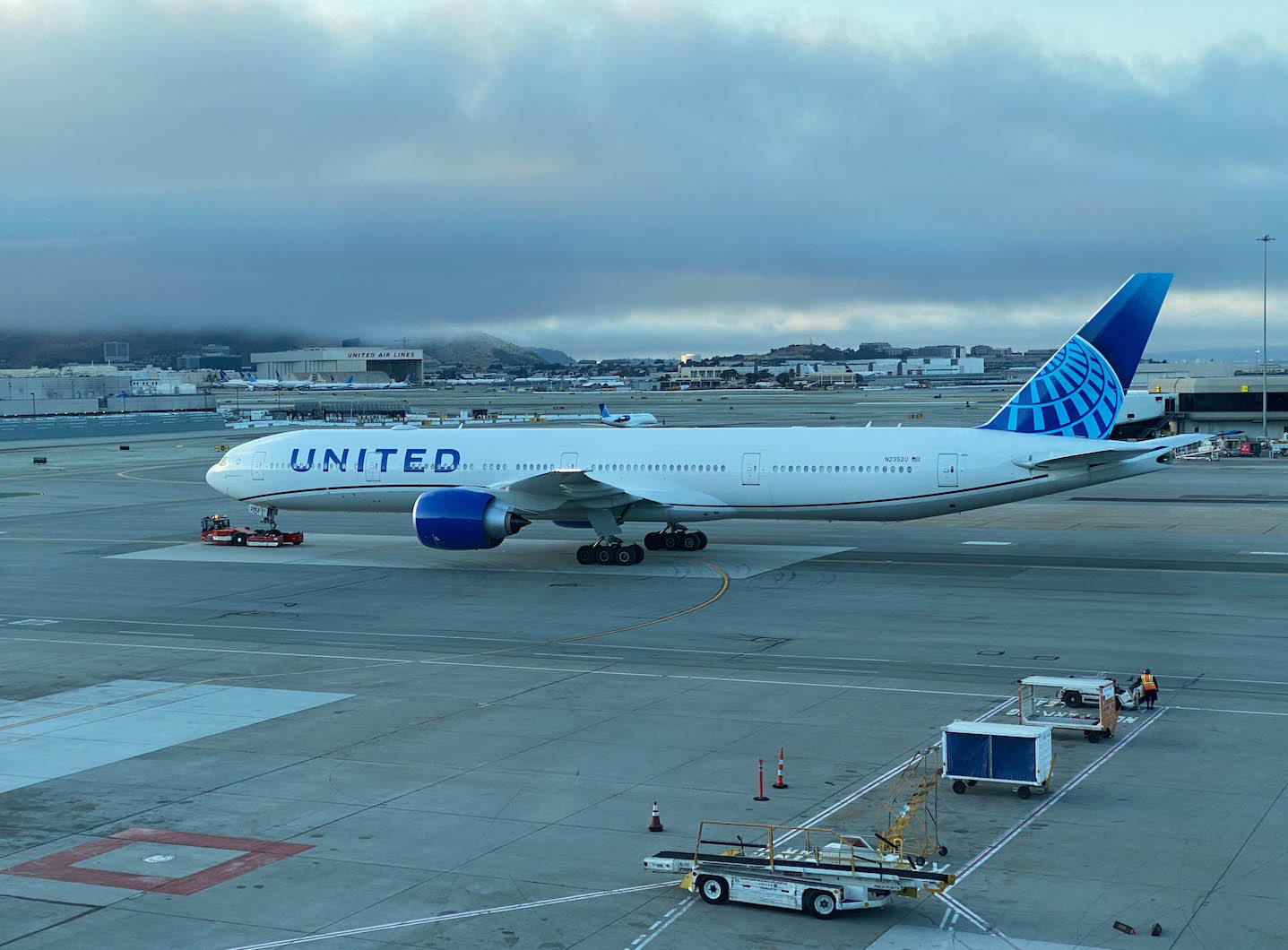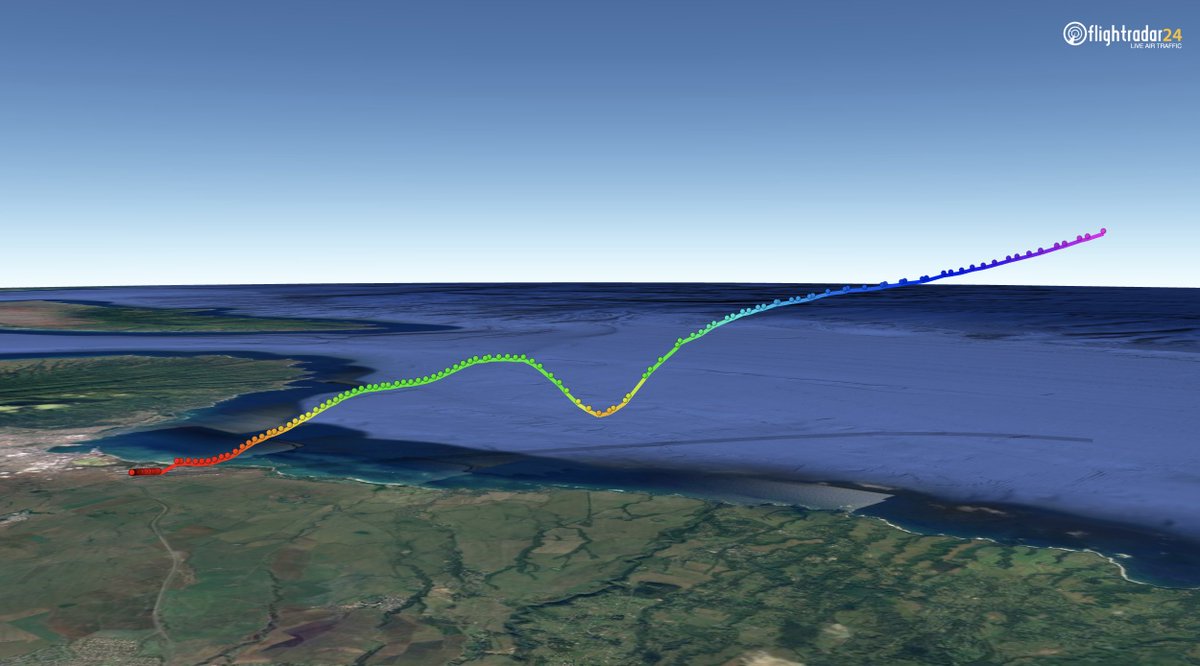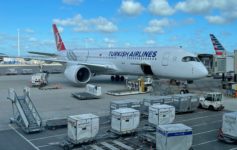
A previously unreported incident from December is chilling: a United Airlines 777-200 came just 775 feet–about five seconds–from hitting the Pacific Ocean after takeoff from Kahului Airport in Maui.
Rapid Loss Of Altitude On United Airlines 777-200 After Maui Takeoff Incident
The incident occurred on UA1722, operating from Maui (OGG) to San Francisco (SFO) on December 18, 2022 aboard a Boeing 777-200 aircraft.
As described by Jon Ostrower of The Air Current:
“Flight 1722 from Maui to San Francisco left Kahului Airport at 2:49 PM Hawaiian time in stormy weather and initially appeared to climb normally. Granular data analyzed with Flightradar24 showed the aircraft reached roughly 2,200 feet before beginning a steep dive that, according to the tracking telemetry, reached a descent rate of nearly 8,600 feet per minute.
“The aircraft quickly recovered, but not before descending below 775 feet. Two people familiar with the incident said the climb produced forces of nearly 2.7 times the force of gravity on the aircraft and its occupants as that steep descent transitioned to an 8,600 foot per minute climb. The entire incident appears to have stretched no more than 45 seconds and in between radio calls with air traffic controllers in Maui.”
The flight continued to SFO and landed ahead of schedule, then continued to Chicago (ORD) as planned roughly 2.5 hours later. Pilots reported the incident and an internal investigation was performed.

United Airlines acknowledged the incident and also added that the pilots have undergone extra training as a result of the incident:
“United then closely coordinated with the FAA and ALPA on an investigation that ultimately resulted in the pilots receiving additional training. Safety remains our highest priority.”
I do not think it is helpful to speculate, at this point, about the cause of the incident. Perhaps we will never learn more since there is no Air Traffic Control (ATC) recording of the event and United seems to consider the matter closed, though I suspect more info will emerge. But the pilots did report it and apparently received additional training, which suggests it may have been something more than just the overpowering weather (the two pilots, per Ostrower, have a combined 25,000 hours of flight experience).
I find it very odd that we are only hearing about the incident now. I would not expect videos or photos since it happened unexpectedly after takeoff, but I would have certainly figured one of the 300+ passengers onboard would have posted something on social media about it.
We’ve heard about a lot of incidents lately. Just like the sudden explosion (so to speak) of unidentified flying objects over the USA after the Chinese balloon, I have to wonder whether we are just paying closer attention now than in the past to these close-calls that might have once just slipped under the radar.
CONCLUSION
I really can think of few incidents as scary as a sudden and dramatic drop over an ocean when flying. A recent event that occurred on United Airlines has now come to light and even now it is not clear what caused it or who is to blame. But, the important thing here is that no passengers or crew members were injured and the sum of these events will hopefully lead to more precaution going forward, which will benefit all parties.
image: a United 777-300ER taxis at SFO




Is it just me, or does there seem to be a lot of issues with these PW powered non-ER 777s used for domestic flights?
That’s a good observation – there is an eery parallel, isn’t there?
Probably cause those 777’s are older than most zoomers. United is still flying the first 777 ever made: https://www.planespotters.net/airframe/boeing-777-200-n777ua-united-airlines/rqkd2r
Really that’s your conclusion air frame age? Rather simplistic. I’d say this is a case of failing to monitor the automation. What’s rule #1 in aviation? So soon after takeoff!
“Aviation in itself is not inherently dangerous. But to an even greater degree than the sea, it is terribly unforgiving of any carelessness, incapacity or neglect.”
FLY THE AIRPLANE! After all that’s why you are there and spent so much effort to get into that cockpit ……. or was it money?
What does the engines have to do with this? If this had been an engine issue the flight flight would not have continued to SFO.
I was on a flight a few days ago out of ATL a fully loaded 737-900 during inclement weather we got off the ground in like 15 seconds we couldn’t’ have been more than 1,000 feet off the ground and the plane dropped almost instantaneously the engines got louder and we were thrust to back of our seats. It felt like the pilots went from normal takeoff power to TOGA or full power. I’m thinking we may have experienced wind shear which helped us get off the ground quickly but then one we entered the down draft it pushed the aircraft down even though we were climbing, we continued on to our destination as well.
While we don’t know what caused the 777 over Maui to drop I think it is safe to say it had nothing to do with the PW engines.
I can’t imagine that this is a normal occurrence as you mentioned. But I’m also bewildered that no passengers in this day and age seemed to notice or post about it on social media. I would have certainly noticed a rapid descent like that right after take-off! With the QR 787 there was a Danish air traffic controller on board who eye witnessed what he knew was not standard and why I think that one got more attention initially.
The fact that the pilots received “additional training” is completely odd to me. These are two experienced 777 pilots for crying out loud. How much additional training do they need? And for what? How not to fly a perfect good airplane into the ocean during poor weather?
Interesting that this has yet to make Av Herald where there is often a lot of good speculation by current pilots. As well junk comments mixed in. The QR flight is on there – so strange this one has, as of yet, not shown up. I hope this gets some more attention and I think it will. It’s trending right now and is the most read article today on Apple News feed.
This is really much ado about nothing. It most certainly sounds like wind shear coming from a microburst storm in the area. They actually didn’t descend at 8700ft/min because they’ll all be dead. That was roughly the vertical speed from the wind shear. The fact of the matter that they recovered almost immediately after the initial sinking with a climb with similar rates, helps explain the phenomena. There really was NOTHING to report here, just a very rough ride and severe turbulence, that’s all.
I thought that initially. But why the need for “retraining?”
It’s a legitimate question isn’t it? I guess it’s more or talks more about a PR stunt to make it feel United is on top of things rather than really solving an issue. IMHO.
Let the eye’s be opened. The amount of flight time between the pilot’s is not important. I have over 26,000 hrs not 25,000 combined, as these two pilot’s did.
The airline training has taken a serious hit. Sub-par at best. The knowledge has left and a new culture has come up the rank and file.
The UAL 777 out of Maui was actually much lower when it recovered than what’s being reported.
The tail didn’t get wet, but ocean spray can’t be ruled out.
Never focus on a pilot’s flight time to make an accurate judgement call.
Take a look at the training! Yrs ago a pilot would study months out for their yearly check-rides. Now a pilot shows up, follows the curriculum and they are good for another yr. This is not a false statement!
A serious wake-up call is needed!
911 sucked, the airline schoolhouse is much worse. A time-bomb that is releasing even now.
Best of luck to all airline travelers….
I would suspect a microburst. The same that brought down Pan Am Flight 759 in New Orleans and Eastern Air Lines Flight 66 at JFK. Fits the profile: sudden loss of altitude while on approach or departure during stormy conditions. More is known about it today and the UA pilots handled the situation well and no one hurt.
Experience counts.
This incident occurred on the same day that HA flight encountered severe turbulence about an hour out from HNL. On other websites, others are speculating that this UA incident is due to a microburst.
Odd that no passengers on the plane seemed to have noticed such a sudden drop. This would have been all over Twitter.
I suspect training would include how to survive/escape microburst downdraft encounter during initial climbout in IMC at high gross weight – with likely little excess power available.
Training likely included how to survive/escape a microburst downdraft during initial climb in IMC at high GW with likely little excess power available.
Isn’t there wind shear detection technology? And can microbursts not be detected on radar?
Meanwhile, on Airline Pilot Central pilot forums section for United….
https://www.airlinepilotforums.com/united/141614-ogg-nose-dive-woah.html
Not a windshear recovery like being discussed here. The pilot not flying retracted the flaps to the incorrect setting, Flap 1 instead of 5, without confirming. Pilot flying still was hand flying he aircraft, which then approached stall and caused the plane to sink. The timing of the flap move occurs when the engines also reduce power slightly assuming standard procedure from takeoff thrust. So not the right time to incorrectly change the flap position with a higher stall speed.
APC forums page is a fabulous spot to get some “inside” knowledge on pilot opinion…. and even more concerning in this instance with pilots saying this is no big deal, plane landed safely without injury, etc.
Thanks so much for this comment and information. It aligns with why the crew would have received additional training. More concerning is why United was silent on this for so long.
This was one post on a forum that has no vetting as far as I can see. By a person who has posted there 22 times only. Not sure exactly how much this can be trusted. I’ve seen nothing else relating to this thus far. It is disturbing if true, but I would take it with a grain of salt at this point.
Good point
An intersting comment from the APC thread.
“Former pilot and I was on that flight on that day. Shortly after TO the pilot slightly retarded the engines. I noticed it but it was subtle. Then we started sinking. The aircraft did not nose over into a dive. It felt like we were hit with a downdraft. Many screamed and the crew increased thrust and recovered and climbed up to FL39 and smooth air. I normally don’t get too bothered by turbulence but I knew we were very close to the water having only been in the air for slightly more than a minute.”
Doesn’t sound like either a “dive” or a 2.7G pullout to me.
What was the weather like? Stormy, hard rain, turbulence, thick clouds??
If the weather radar tape is still available, it could shed some light on the situation.
It was stormy. There was a thunderstorm in the vicinity I believe.
Current aviation radar can detect microbursts, so I don’t think this is what happened. I suspect the pilots turned on the auto pilot that malfunctioned and took the aircraft in a steep climb and a stall. The aircraft fell out of the sky until it was saved by the pilot regaining control. Possibly the pitot tubes were clogged by insects.
I’m guessing that the autopilot, (ALT) was incorrectly set